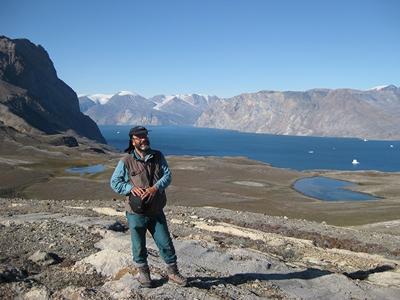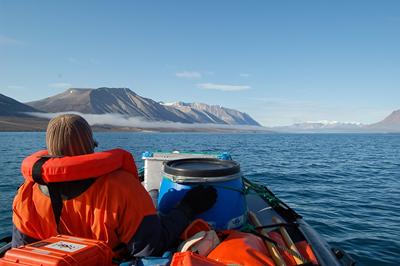Erosion of ozone layer responsible for mass extinction event

John Marshall and a team of researchers in the School of Ocean & Earth Science have shown that an extinction event 360 million years ago, that killed much of the Earth’s plant and freshwater aquatic life, was caused by a brief breakdown of the ozone layer that shields the Earth from damaging ultraviolet (UV) radiation. This is a newly discovered extinction mechanism with profound implications for our warming world today.
There have been a number of mass extinction in the geological past. Only one was caused by an asteroid hitting the Earth which was 66 million years ago when the dinosaurs became extinct. Three of the others, including the end Permian Great Dying, 252 million years ago, were caused by LIPS (Large Igneous Provinces) that are continental scale volcanic eruptions of sufficient magnitude to destabilise the Earth’s atmospheres and oceans.
Now, scientists have found evidence showing it was high levels of UV radiation which collapsed forest ecosystems and killed off many species of fish and tetrapods (our four limbed ancestors) at the end of the Devonian geological period, 359 million years ago. This damaging burst of UV radiation occurred as part of one of the Earth’s climate cycles, rather than being caused by a huge volcanic eruption.
The ozone collapse occurred as the climate rapidly warmed following an intense ice age and the researchers suggest that the Earth today could reach comparable temperatures, possibly triggering a similar event. Their findings are published in the journal Science Advances.

The team collected rock samples during expeditions to mountainous polar-regions in East Greenland. These samples are from ancient lake deposits in the arid interior of the Old Red Sandstone Continent, made up of Europe and North America. This lake was situated in the Earth’s southern hemisphere and would have been similar in nature to modern day Lake Chad which is on the edge of the Sahara Desert. Other rocks were collected from the Andean Mountains above Lake Titicaca in Bolivia. These South American samples were from the southern continent of Gondwana, which was closer to the Devonian South Pole. They held clues as to what was happening at the edge of the melting Devonian ice sheet, allowing a comparison between the extinction event close to the pole and close to the equator.

Back in the lab, the rocks were dissolved in hydrofluoric acid, releasing microscopic plant spores (like pollen, but from fern like plants that didn’t have seeds or flowers) which had lain preserved for hundreds of millions of years. On microscopic examination, the scientists found many of the spines on the spores that are normally perfectly pointed had become bizarrely malformed. This malformation is the well-known response to UV-B radiation damaging the DNA of pollen and spores in the brief interval between the separation of the spore mother cell and deposition of the UV-B protective outer wall layer. Such malformation has been experimentally induced on the pollen of living plants and represents the gold standard for recognising episodes when UV-B got past the stratospheric ozone barrier. In addition, many of the spores had dark pigmented walls, thought to be a kind of protective ‘tan’, due to increased and damaging UV levels.
The scientists concluded that, during a time of rapid global warming, the ozone layer collapsed for a short period, exposing life on Earth to harmful levels of UV radiation and triggering a mass extinction event on land and in shallow water at the Devonian-Carboniferous boundary.

Following melting of the ice sheets, the climate was very warm, with the increased heat above continents pushing more naturally generated ozone destroying chemicals into the upper atmosphere. This let in high levels of UV-B radiation for several thousand years.
During the extinction, plants selectively survived, but were enormously disrupted as the forest ecosystem collapsed. The dominant group of armoured fish became extinct. Those that survived – sharks and bony fish – remain to this day the dominant fish in our ecosystems.
These extinctions came at a key time for the evolution of our own ancestors, the tetrapods. These early tetrapods are fish that evolved to have limbs rather than fins, but still mostly lived in water. Their limbs possessed many fingers and toes. The extinction reset the direction of their evolution with the post-extinction survivors being terrestrial and with the number of fingers and toes reduced to five.
Identifying that there was a process inherent to the Earth System where the protective ozone layer can get eroded gives us a warning from Deep Time about anthropogenic climatic warming. The process that was active at the Devonian-Carboniferous boundary could equally become active in the near future and similarly collapse our ecosystem.
The research was funded in part by a grant from the National Geographic Society.
